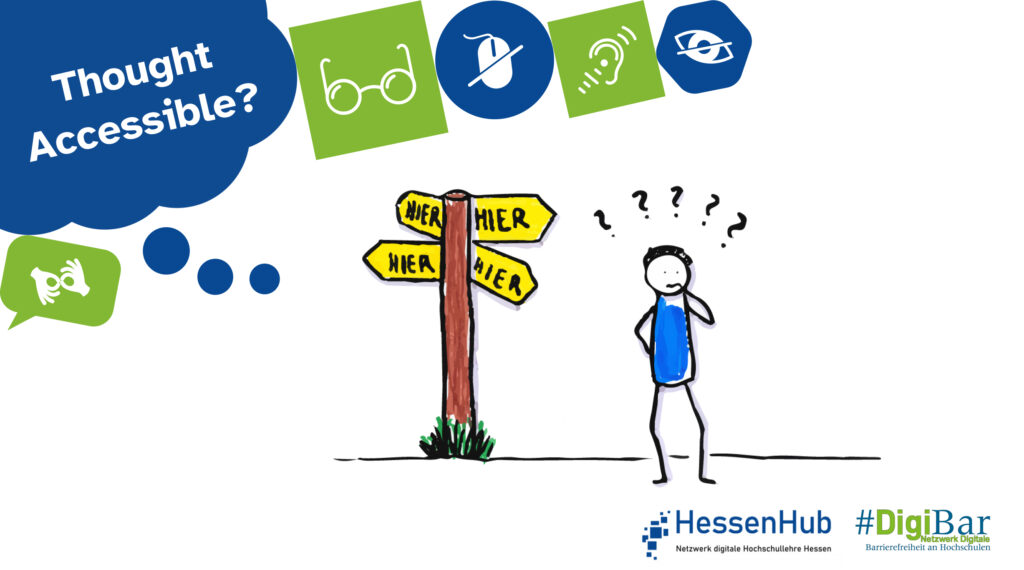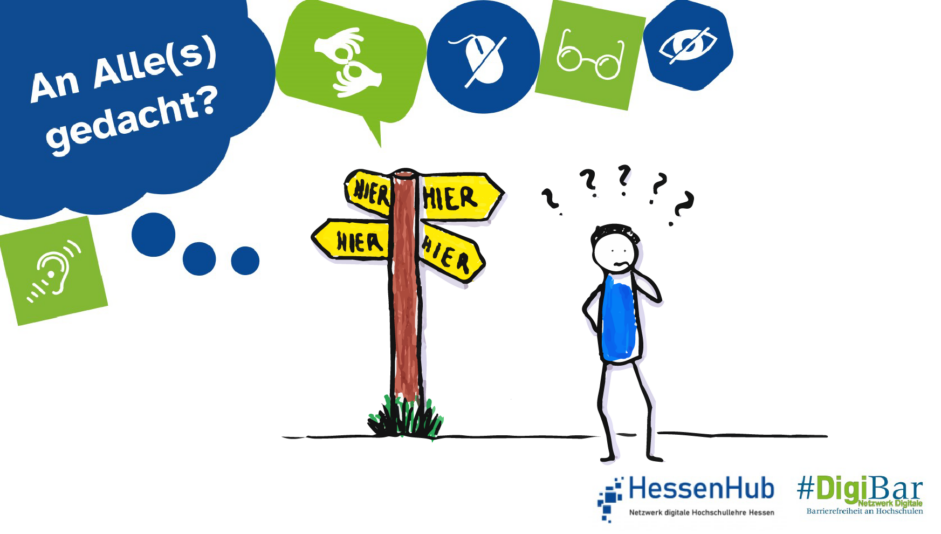Diese Seite gibt es auch auf Deutsch.

Think Accessible!
Links can be found both on web pages and in documents. They can point to content on the same page/document or to external content such as another website, email address or file. You can navigate easily with a simple click.
The following examples show why links can be a barrier.
Example 1
With a barrier: For more information click here.
Better: For more information, please visit the HessenHub website.
It is not immediately clear where the link will take you in the first sentence. Words like “here” or “more” are often used. It would be better to say directly in the sentence where the link goes and what format it has (e.g. website, PDF, etc.).
Example 2
With a barrier: You can find the video at https://youtu.be/oHIUnMnzetw?feature=shared.
Better: You can find the video on YouTube under the title: “Digi[Snack]Bar: Actively shaping inclusion – practical examples from the HessenHub project“.
Even better: You can find the video under the title “Digi[Snack]Bar: Actively shaping inclusion – practical examples from the HessenHub project” on YouTube.
Again, it is not clear where you will go when you click on the link. The full URL is cryptic and gives no indication of the destination of the link. For sighted people, the “better” option is sufficient because they can immediately associate the information from the sentence with the link.
For blind people using a screen reader, this information should appear directly in the link text (“Even better”). Screen readers can not only read text linearly, but can also select structural features such as links. Only the labelled link text is output. Other information from the sentence remains hidden.
Note: If the text is printed as well as being read digitally, the link should also be available in full – e.g. in the bibliography.
Further information
In addition to the link destination, users may also want to know whether the link opens in the same tab or in a new tab. If the content opens in a new tab, you can add the following to the link text: opens in a new tab. There is no general recommendation for accessibility. There are advantages and disadvantages to both: If many links open in a new tab, you may end up with a lot of tabs open after a while; if they open in the same window, you may lose the path to content you have previously visited. Opening content from the same page in the open tab and opening a new tab for external content is one way to handle this on websites.
Tips for links and further information
- To make text accessible, underlining should generally be avoided. Links are an exception to this rule. They are usually visually identified by underlining and a blue text colour. The formatting of the link should change visually when the mouse is moved over it (hover/mouse-over). You can read more about this on the “Accessible Web Design: The Link Convention”.
- Leserlich: Highlighting (in German)
- For more information on visual references to the file format, such as CSS icons or linked graphics, see the BIK BITV test steps:
Responsible for the content: WG “Digital Accessibility Campaign”.
Do you have any questions or suggestions? Please contact Sanja Grimminger.
#DenkBarrierefrei #ThinkAccessible #DigiBar #HessenHub #AnAllesGedacht

